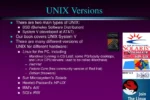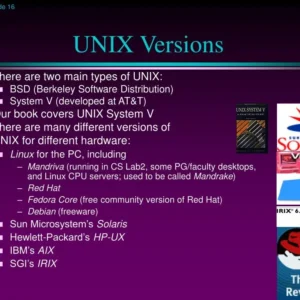The Amazon Kuiper satellite initiative marks a significant leap in the realm of satellite connectivity, as the telecom regulator Ofcom has granted a crucial license to Amazon Kuiper Services Europe. This license empowers Kuiper to deploy user terminals operating in the Ka-band, facilitating satellite internet access for homes, businesses, and public sector organizations across the UK. With two test satellites already in orbit and plans for a total of 3,232 satellites, the Amazon satellite service is poised to revolutionize the connectivity landscape. Expected to launch the production satellites in 2025 via partnerships with leading rocket providers, Amazon aims to compete head-to-head with existing players like SpaceX’s Starlink. As the demand for reliable broadband continues to surge, the capabilities of Kuiper’s ultra-compact user terminals, offering speeds up to 1 Gbps, could redefine how communities connect to the digital world.
The project known as Amazon Kuiper satellite aims to enhance global internet access through advanced satellite technology. With the recent authorization from Ofcom, this initiative is set to provide satellite internet services, utilizing innovative user terminals to deliver high-speed connectivity. As Amazon gears up for the deployment of its expansive satellite constellation, it stands ready to challenge established networks such as SpaceX’s Starlink. The commitment to launching over 3,000 satellites signifies a robust approach to expanding broadband availability, particularly in remote and underserved regions. By focusing on high-performance standards and competitive pricing, Amazon’s satellite service could play an essential role in bridging the digital divide.
Amazon Kuiper Satellite: A New Player in Satellite Connectivity
Amazon Kuiper is positioning itself as a formidable contender in the satellite internet market, having recently gained approval from Ofcom to provide satellite connectivity across the UK. This strategic licensing enables Amazon Kuiper to deploy its user terminals in the Ka-band, which is essential for high-speed satellite communications. The approval marks a significant milestone in the development of Kuiper’s satellite constellation, which aims to deliver robust internet services to homes, businesses, and public sector organizations once operational. With the anticipated launch of a total of 3,232 satellites, Amazon Kuiper is set to revolutionize satellite internet access, making it a key player in an increasingly competitive landscape dominated by companies like SpaceX and OneWeb.
The deployment of Kuiper user terminals is poised to enhance satellite connectivity significantly, providing customers with access to high-speed internet. Amazon claims its ultra-compact terminals could provide download speeds of up to 100 Mbps, while its larger models could reach speeds of up to 1 Gbps. This performance is particularly appealing for users in rural or underserved areas, where traditional broadband options may be limited. As the demand for reliable internet connectivity grows, Kuiper’s innovative approach to satellite technology could reshape how users connect to the internet.
The Role of Ofcom in Regulating Satellite Services
Ofcom, the telecom regulator in the UK, plays a crucial role in overseeing the licensing and regulation of satellite services such as those proposed by Amazon Kuiper. Their recent approval of Kuiper’s license application reflects a thorough evaluation of the project’s potential impact on the existing satellite ecosystem. Ofcom’s analysis concluded that the introduction of larger non-geostationary orbit (NGSO) systems like Kuiper’s poses no significant risk to competition or interference with current satellite operations. This regulatory support not only facilitates the growth of satellite internet but also ensures that multiple providers can coexist, thereby enhancing consumer choice.
In addressing concerns raised by potential competitors regarding coexistence in the Ka-band, Ofcom clarified that larger satellite systems do not inherently increase risks associated with interference or collision. Instead, by offering a greater selection of satellites for users, systems like Kuiper might actually promote better coexistence among service providers. This regulatory framework is vital for fostering innovation and ensuring that advancements in satellite technology can be translated into real-world benefits for consumers.
Amazon Kuiper’s Competitive Edge in Satellite Internet
As Amazon Kuiper prepares to enter the satellite internet market, it faces stiff competition from established players like SpaceX’s Starlink. Starlink, having pioneered satellite internet services with its public beta testing beginning in 2020, has already built a significant customer base and expanded its global coverage. Kuiper will need to differentiate itself not only through competitive pricing but also by showcasing superior performance and reliability. With the promise of higher speeds and the backing of Amazon’s extensive logistics and infrastructure capabilities, Kuiper is aiming to carve out its niche in this rapidly evolving landscape.
To effectively compete with Starlink and others, Amazon Kuiper must also address customer expectations regarding pricing and service quality. While Kuiper has yet to announce its pricing structure, it is anticipated that it will align closely with Starlink’s offerings, which charge around $120 per month for residential customers. However, with the potential for diverse plans and packages, Kuiper could attract customers by targeting specific user needs, such as high-speed options for businesses or affordable solutions for rural households. The challenge lies in not only matching but exceeding the expectations set by existing services.
The Future of Satellite Internet with Amazon Kuiper
The future of satellite internet appears promising with the impending launch of Amazon Kuiper’s satellite constellation. Scheduled to commence in 2025, this ambitious project aims to provide extensive coverage and high-speed connectivity to users across the UK and potentially beyond. As the demand for reliable internet access grows, particularly in remote areas, Kuiper’s satellite service could play a crucial role in bridging the digital divide. The combination of Amazon’s resources and advanced technology positions Kuiper to meet the challenges of modern connectivity.
Moreover, as more consumers and businesses rely on satellite internet for their connectivity needs, the competition among providers will likely drive innovations in service offerings. Kuiper’s entry into the market will not only enhance service availability but could also lead to improvements in pricing and performance across the board. This competitive environment is beneficial for consumers, who will have more options to choose from, ensuring that they can find a service that meets their specific needs.
Understanding Kuiper User Terminals and Their Technology
The technology behind Kuiper user terminals is designed to maximize satellite connectivity and performance. These terminals are engineered to operate within the Ka-band, a frequency range that offers high-capacity data transmission. With the promise of ultra-compact designs and varying performance levels, Kuiper’s terminals aim to cater to a wide range of users, from residential customers to large enterprises. The streamlined technology will enable seamless connectivity, allowing users to experience high-speed internet regardless of their geographical location.
Furthermore, the ease of installation and use of Kuiper user terminals will be pivotal in attracting customers who may be hesitant about adopting satellite internet technology. Amazon’s focus on user-friendly designs means that these terminals can be quickly set up with minimal technical expertise required. This aspect is particularly important for users in rural areas where traditional internet service providers may not reach, as it lowers the barriers to entry for high-speed satellite internet access.
Comparing Amazon Kuiper to Other Satellite Internet Providers
In the burgeoning satellite internet market, Amazon Kuiper will be competing against established players like SpaceX’s Starlink and OneWeb. Each of these providers offers unique advantages and challenges, creating a dynamic environment for consumers. Starlink, for instance, has gained a significant first-mover advantage with its extensive satellite network and established user base. In contrast, Kuiper’s entry into the market could introduce a competitive pricing strategy and innovative service offerings that may appeal to different segments of the market.
OneWeb also poses a notable challenge to Kuiper as it focuses on providing satellite connectivity to underserved regions with support from the UK government. This focus on social impact and connectivity could resonate with consumers looking for reliable internet solutions. As Kuiper prepares to launch its services, it will need to consider the strategies of its competitors, ensuring that it not only meets but exceeds consumer expectations in terms of service quality, pricing, and coverage.
The Impact of Satellite Internet on Rural Connectivity
Satellite internet services like those proposed by Amazon Kuiper have the potential to significantly improve connectivity in rural and underserved areas. Many regions still lack access to reliable broadband services, which can hinder economic development and limit educational opportunities. By deploying a constellation of satellites, Kuiper aims to bridge this gap, providing high-speed internet access to households and businesses that have historically been overlooked by traditional service providers.
The introduction of satellite internet will empower communities by enabling access to essential online services, such as telemedicine, remote education, and e-commerce. By enhancing digital connectivity, Amazon Kuiper can play a vital role in fostering economic growth and social inclusion in rural areas. As the world increasingly relies on technology for everyday activities, the role of satellite internet in ensuring equitable access to these resources becomes ever more critical.
Navigating the Challenges of Satellite Internet Deployment
Despite the promising outlook for Amazon Kuiper and its satellite internet services, several challenges must be navigated during deployment. The complexities of launching and maintaining a large constellation of satellites involve significant logistical and technical hurdles. From securing launch vehicles to ensuring each satellite operates effectively within the constellation, Amazon must address these challenges meticulously to deliver on its promises of high-speed connectivity.
Additionally, competition is fierce, with established players like Starlink already capturing market share and consumer loyalty. Kuiper must not only deploy its satellites efficiently but also market its services effectively to attract potential customers. Overcoming these challenges will require innovation, strategic partnerships, and a keen understanding of consumer needs in the evolving landscape of satellite connectivity.
The Economics of Satellite Internet Services
The economics surrounding satellite internet services, particularly for Amazon Kuiper, will play a crucial role in its long-term viability and success. Pricing strategies will need to be competitive with existing providers like Starlink, which charges around $120 per month for its service. However, Amazon must also consider the associated costs of hardware and installation, which can deter potential customers. By offering flexible pricing options and bundled packages, Kuiper can appeal to a broader range of consumers while ensuring profitability.
Moreover, the scale of Amazon’s operations and its ability to leverage existing infrastructure could provide a significant advantage in reducing costs. As satellite technology continues to evolve, the potential for economies of scale will allow Kuiper to offer competitive pricing without compromising on service quality. This economic model is crucial, as it will determine how effectively Kuiper can penetrate the market and establish itself as a reputable provider of satellite internet services.
Frequently Asked Questions
What is the Amazon Kuiper satellite project and its purpose?
The Amazon Kuiper satellite project aims to provide satellite internet connectivity through a constellation of 3,232 satellites in low Earth orbit. Designed to serve homes, businesses, and public sector organizations, it seeks to enhance broadband access, particularly in underserved areas.
How does the Ofcom license benefit the Amazon Kuiper satellite initiative?
The Ofcom license allows Amazon Kuiper Services Europe to operate user terminals in the Ka-band, enabling the provision of satellite connectivity across the UK. This regulatory approval facilitates the deployment of Kuiper’s satellite internet services once the constellation is operational.
What speeds can users expect from Amazon Kuiper user terminals?
Amazon Kuiper user terminals are designed to deliver varying speeds: the ultra-compact terminal offers up to 100 Mbps, the standard model reaches 400 Mbps, and the largest model, aimed at commercial enterprises, can provide speeds of up to 1 Gbps.
How does Amazon Kuiper satellite compare to SpaceX’s Starlink?
While both Amazon Kuiper satellite and SpaceX’s Starlink aim to provide satellite internet, Starlink has a first-mover advantage, having begun public beta testing in 2020. Kuiper plans to launch its satellite internet service in 2025, with expected pricing similar to Starlink’s current rates.
What are the implications of satellite connectivity from Amazon Kuiper for competition in the market?
The introduction of Amazon Kuiper satellite services is expected to enhance competition in the satellite internet market. Ofcom noted that larger non-geostationary orbit systems like Kuiper’s could provide more options for users, improving coexistence with existing satellite systems.
What is the launch timeline for the Amazon Kuiper satellite constellation?
Amazon plans to launch its production satellites for the Kuiper satellite constellation in 2025, utilizing rockets from partners such as Blue Origin, Arianespace, United Launch Alliance, and SpaceX.
Will Amazon Kuiper satellites interfere with existing satellite services?
Ofcom has concluded that there will be no significant risk of interference or collision between Amazon Kuiper satellites and current or planned satellite systems operating in the Ka-band, indicating a favorable environment for coexistence.
What challenges does Amazon Kuiper face in the satellite internet market?
Amazon Kuiper must compete against established players like SpaceX’s Starlink and OneWeb, which already have significant market presence and customer bases. Concerns over coexistence with other satellite systems also present challenges for its deployment.
What is the expected pricing for Amazon Kuiper satellite internet services?
While Amazon has not yet announced specific pricing for its satellite internet services, it is anticipated that costs will be comparable to SpaceX’s Starlink, which charges around $120 per month for residential customers, plus hardware fees.
How many test satellites has Amazon Kuiper launched so far?
To date, Amazon Kuiper Services Europe has successfully launched two test satellites into orbit as part of the development of its satellite constellation.
| Key Point | Details |
|---|---|
| License Approval | Ofcom has approved Amazon Kuiper Services Europe’s license to provide satellite connectivity in the UK. |
| Ka-band Operation | The license allows Kuiper to operate user terminals in the Ka-band for satellite communication. |
| Satellite Constellation | Amazon plans to deploy a total of 3,232 satellites, with two test satellites already in orbit. |
| Launch Timeline | Production satellites are expected to launch in 2025 using various rockets. |
| Performance Specs | Kuiper’s terminals promise speeds of 100 Mbps, 400 Mbps, and up to 1 Gbps for larger models. |
| Competition | Competing with SpaceX’s Starlink, which has been operational since 2020. |
| Pricing | Pricing details are not yet available, but expected to be similar to Starlink’s $120 monthly fee. |
| Regulatory Concerns | Ofcom found no issues with Kuiper coexisting with other NGSO satellite systems. |
| Other Competitors | OneWeb is also a competitor, having received UK government investment. |
Summary
The Amazon Kuiper satellite project marks a significant advancement in satellite connectivity, as it aims to provide high-speed internet access across the UK and beyond. With the recent approval from Ofcom, Amazon is set to launch a vast constellation of satellites, promising enhanced connectivity for homes and businesses. As Amazon Kuiper prepares to compete with established players like SpaceX’s Starlink, its emphasis on performance and regulatory compliance positions it as a strong contender in the satellite internet market.










